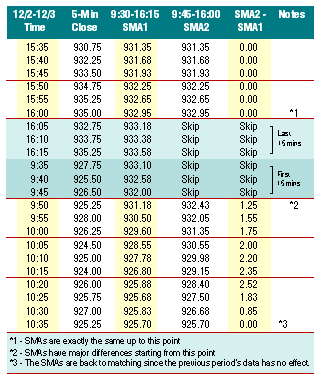Data Reduction
Daytrading The E-Mini
by Lawrence Chan
See how reducing data can boost your trading system performance.
There are many aspects of trading system design. Traders often focus on signal generation and money management, but ignore the most important and fundamental issue of all: the data. I will show you how to preprocess raw data in such a way that even a simple trading system will perform with excellent results.
INTRODUCTION
The Standard & Poor's e-mini is the hottest index future traded at the Chicago Mercantile Exchange (CME). To trade a single S&P e-mini contract, you need a futures brokerage account and enough money to cover the margin. It's a very popular instrument among daytraders, since they can buy and sell this contract as many times as they wish without worrying about the complex margin requirements of stock daytrading.
The S&P e-mini contract is well known for its wild swings and behavior that changes over time. Although many traders create mechanical models to trade the S&P e-mini, it is challenging to produce models that consistently make profits. One of the biggest difficulties in designing these mechanical models is that the systems generate far too many false signals, no matter how you adjust the rules.
I approached this problem from an angle I thought was unique: I improved the quality of the data, because I firmly believe that preprocessing of raw data is one of the most overlooked issues in technical analysis. Rather than painstakingly analyzing every detail of S&P e-mini data, I removed the noisy data. Once such data is removed from the charts, the indicators perform better, which in turn leads to better trading system performance.

Figure 1: Effects of data reduction. Skipping the data from the first and last 15 minutes of trading affects the 10-period simple moving average.
...Continued in the August 2003 issue of Technical Analysis
of STOCKS & COMMODITIES
Excerpted from an article originally published in the August 2003 issue of Technical Analysis of STOCKS & COMMODITIES magazine. All rights reserved. © Copyright 2003, Technical Analysis, Inc.
Return to August 2003 Contents